Main Menu
- Home
- Product Finder
- Calibration Systems
- Calibration Services
- Digital Sensing
- Industrial Vibration Calibration
- Modal and Vibration Testing
- Non-Destructive Testing
- Sound & Vibration Rental Program
- Learn
- About Us
- Contact Us
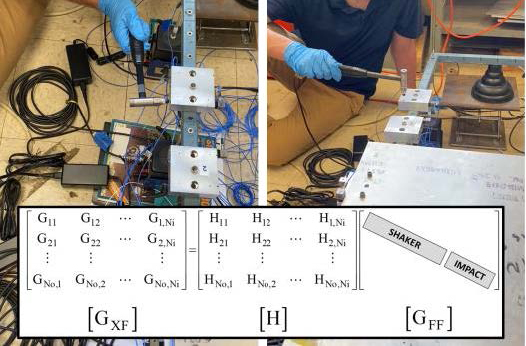 Research at The University of Massachusetts Lowell has been continuing on new methods for improving the methodology of replicating field environments in the laboratory configuration. Generally, there is a difference between the lab and field such
that the lab testing does not properly characterize the actual field environment. One approach is the FINE (FIxture NEutralization) technique which heavily relies on accurate measurements of
the attachment FRFs needed for this impedance based modeling approach. These measurements can often be blemished with noise and variance as typically seen in many real world measurements necessary for this work. And for this approach,
there can be a significant number of connection point references that may be required for the processing of the data.Research Assistant Chris Page is working on a funded project from Honeywell FMT to experimentally
implement the FINE approach; the FINE approach was first developed by Jesus Reyes Blanco several years ago. Two major hurdles in this work were to collect data from a 12 shaker MIMO test setup along with an additional 40 impact FRFs to assemble
one complete FRF matrix for the impedance modeling process.
Research at The University of Massachusetts Lowell has been continuing on new methods for improving the methodology of replicating field environments in the laboratory configuration. Generally, there is a difference between the lab and field such
that the lab testing does not properly characterize the actual field environment. One approach is the FINE (FIxture NEutralization) technique which heavily relies on accurate measurements of
the attachment FRFs needed for this impedance based modeling approach. These measurements can often be blemished with noise and variance as typically seen in many real world measurements necessary for this work. And for this approach,
there can be a significant number of connection point references that may be required for the processing of the data.Research Assistant Chris Page is working on a funded project from Honeywell FMT to experimentally
implement the FINE approach; the FINE approach was first developed by Jesus Reyes Blanco several years ago. Two major hurdles in this work were to collect data from a 12 shaker MIMO test setup along with an additional 40 impact FRFs to assemble
one complete FRF matrix for the impedance modeling process.
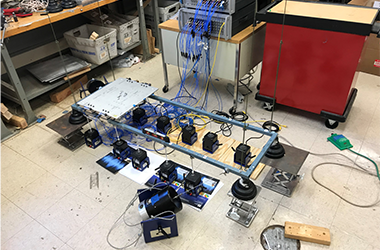
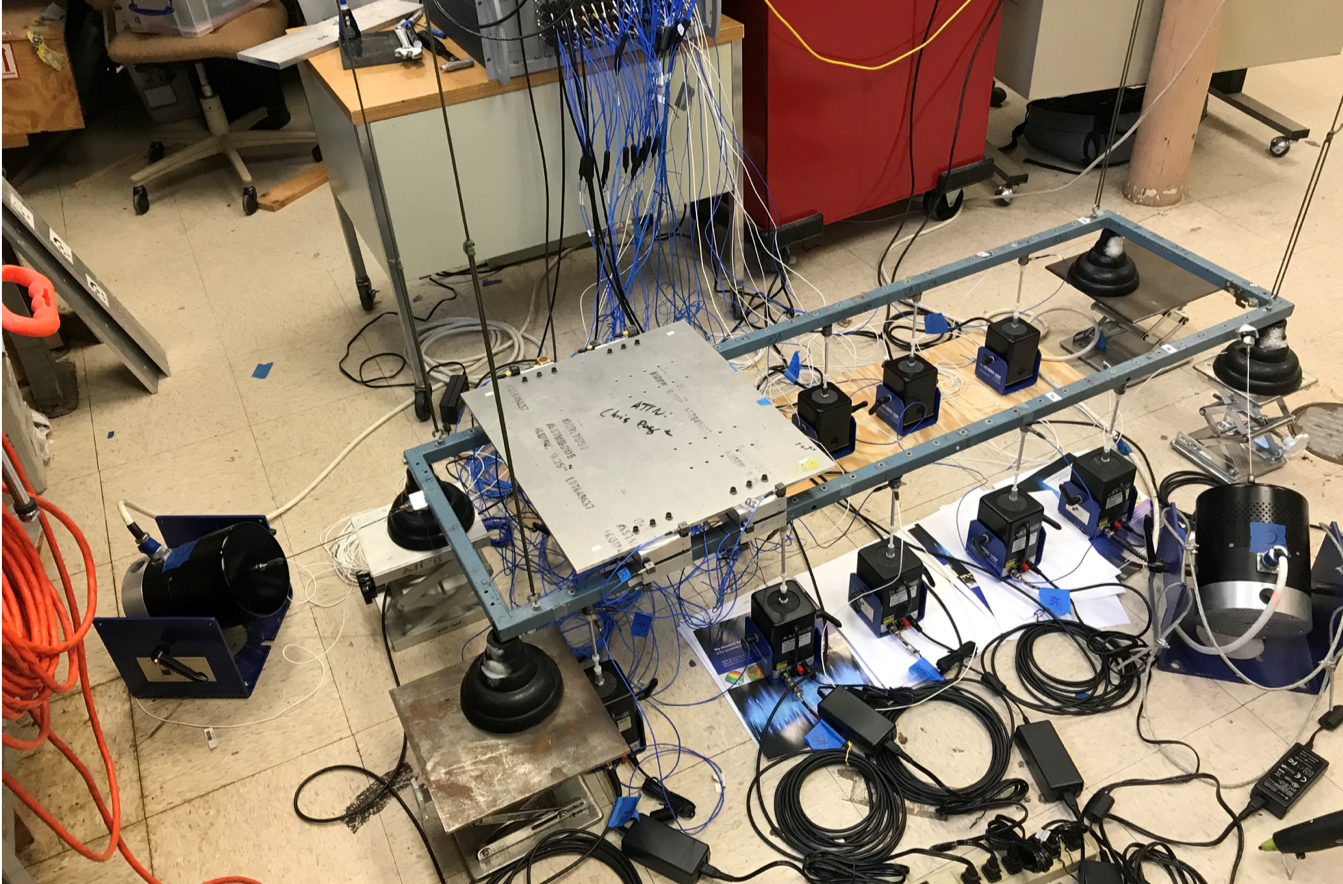
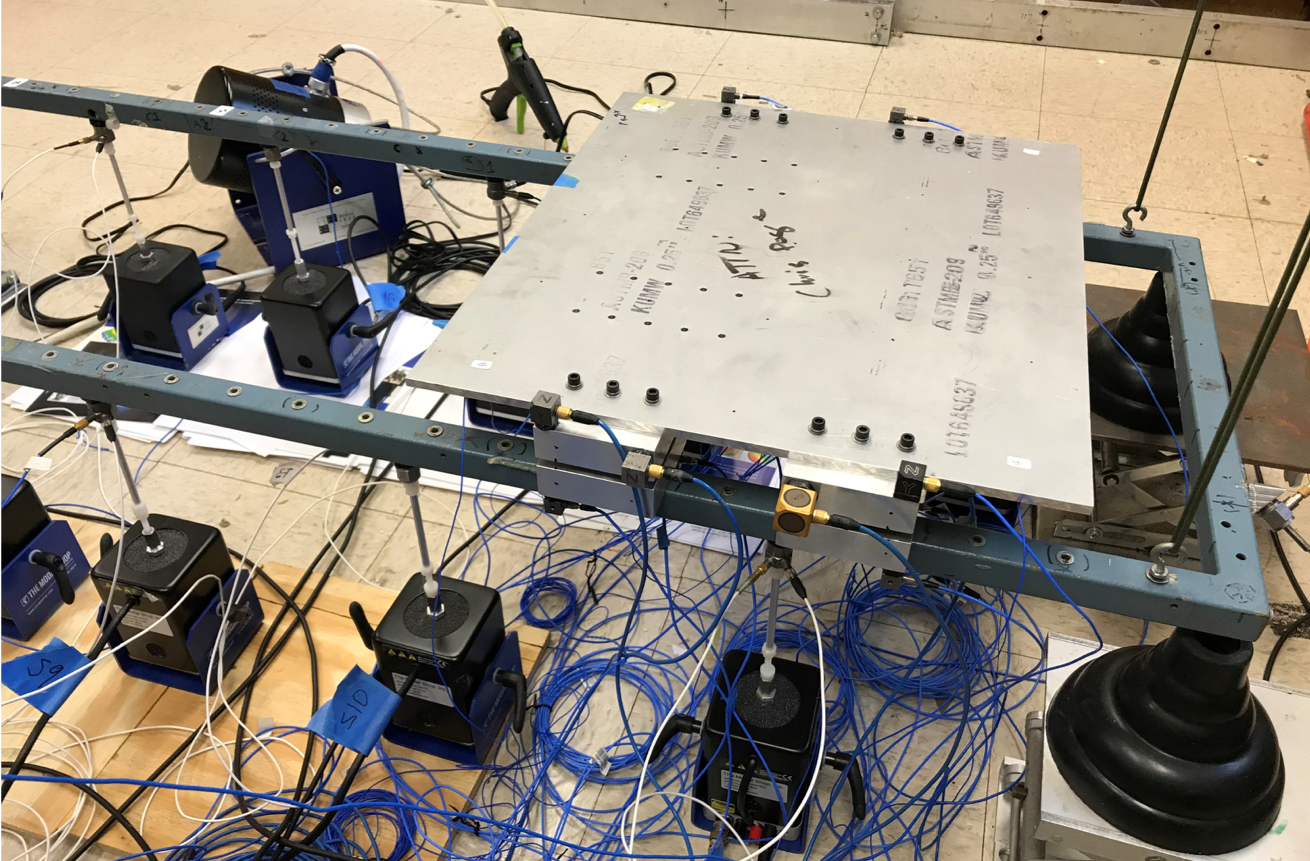
Being able to collect that many consistently related FRF measurements was a significant task. And, in order to achieve this, not only was the 12 shaker MIMO test of concern, but the inclusion of consistently related impact FRFs was yet a 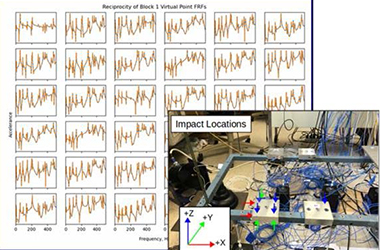 bigger issue to address.A new approach called MIS-MIMO was developed to assure that a consistent set of FRFs were obtained. This Mixed Impact Shaker MIMO test was the solution to the problem. While the FRFs were very consistently related, Chris needed to process the measured data to also remove all the blemishes and variance seen in the noisy test environment. In addition to these measurement issues, Chris also developed his own modal parameter estimation process to include more realistic residual attachment modes to improve the FRF synthesis process. This step assured that the FRFs formed a proper reciprocal FRF matrix describing each of the 4 attachment blocks connecting the components together (measurements for one block are shown).
bigger issue to address.A new approach called MIS-MIMO was developed to assure that a consistent set of FRFs were obtained. This Mixed Impact Shaker MIMO test was the solution to the problem. While the FRFs were very consistently related, Chris needed to process the measured data to also remove all the blemishes and variance seen in the noisy test environment. In addition to these measurement issues, Chris also developed his own modal parameter estimation process to include more realistic residual attachment modes to improve the FRF synthesis process. This step assured that the FRFs formed a proper reciprocal FRF matrix describing each of the 4 attachment blocks connecting the components together (measurements for one block are shown).
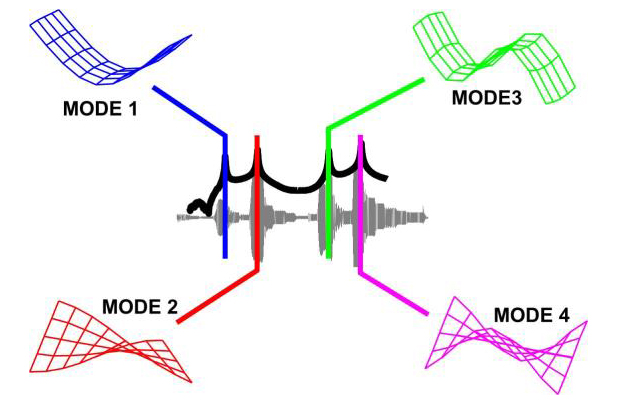 This current work is the subject of papers presented at the 39th International Modal Analysis Conference held virtually in February 2021 in Orlando Florida. The entire research effort is documented in Chris’ dissertation completed in the fall of 2020.
This current work is the subject of papers presented at the 39th International Modal Analysis Conference held virtually in February 2021 in Orlando Florida. The entire research effort is documented in Chris’ dissertation completed in the fall of 2020.
The test configuration studied was instrumented with over 80 PCB accelerometers and driven with twelve Modal Shop 2007E Mini Shakers along with LMS Test Lab as the data acquisition software.
Submitted by Dr. Peter Avitabile, PE; Structural Dynamics and Acoustic Systems Laboratory, University of Massachusetts Lowell